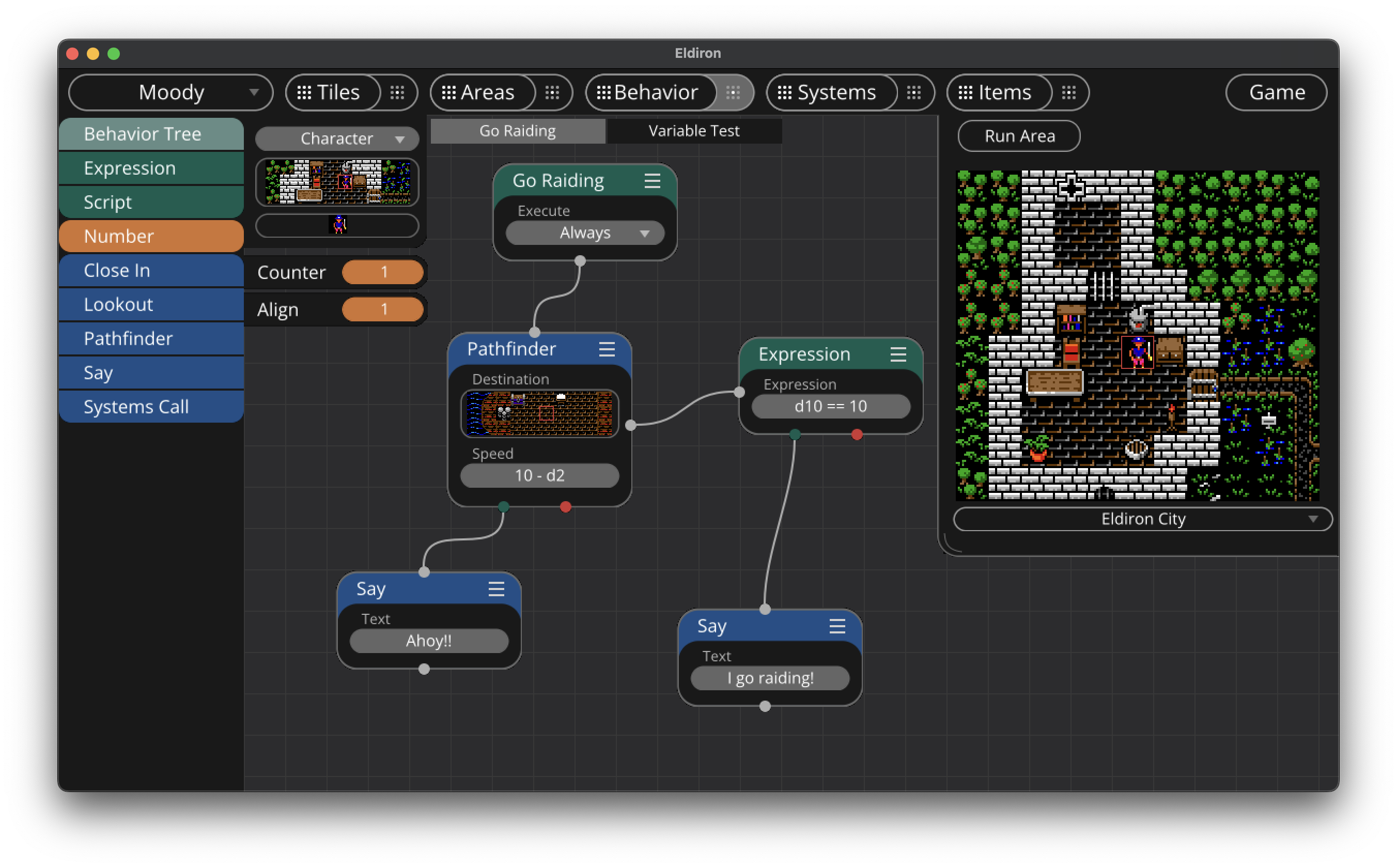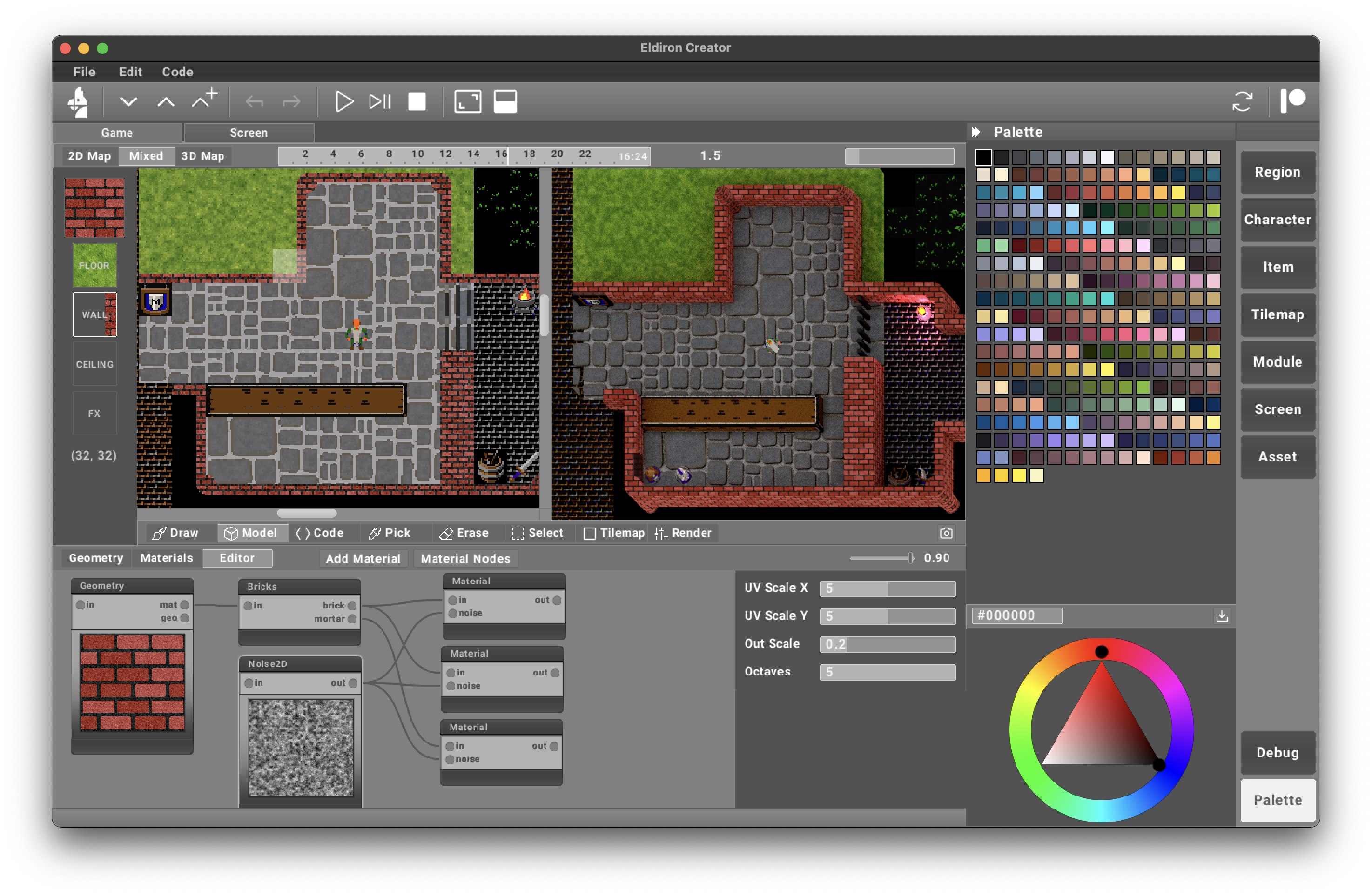Foreword
The Beginning
I’ve been working on Eldiron for over three years now, starting back in January 2022. What began as a small hobby project—an attempt to develop an RPG creator for games similar to Ultima 4—quickly grew into something much bigger. Ultima 4 was a game I loved playing as a teenager and my introduction to RPGs. Many more followed, shaping my passion for the genre.
During this time, I fell in love with the aesthetics of these classic games. In the 80s, 90s, and early 2000s, developers had limited graphical capabilities, but they made up for it with beautiful pixel art and unique mechanics. I wanted to create a tool that would allow me to build games with the same level of depth and detail as those classics.
Early Development
My first attempt looked something like this, around mid-2022:
I quickly realized two things: first, working on Eldiron was incredibly fun, and second, things got complicated fast. My initial approach was too simplistic—it didn’t allow for all the cool features I wanted to include.
I knew I needed to rework the user interface, add scripting and node-based systems, and create a universal map editor that could handle 2D, isometric, and first-person games.
At this stage, I thought, why not go all in? So, I started working on a new version of Eldiron from scratch.
In the Middle
I spent several months developing a new user interface engine in Rust. My goal was to make Eldiron fully cross-platform (Mac, Windows, and Linux) and independent of third-party frameworks. That meant building everything from scratch—a time-consuming task, but one I felt was worth it in the long run.
By mid-2023 and early 2024, the new UI was taking shape, but I was still figuring out the best way to implement a flexible world editor that could support both 2D and 3D game development.
On the Way to v1 – The Current State
One of the final pieces of the puzzle was choosing a Doom-style world editor—a decision that made creating worlds and levels both easy and highly flexible. Another major decision was to use Python for scripting while also developing a visual, node-based scripting system for those who prefer to work without code.
The node system is built around Python classes (modules), making it possible to use the same logic in both direct scripting and visual scripting.
In keeping with the retro aesthetic, I also implemented a software rasterizer—if they could do it in 1990, we can certainly do it now!
With the first public versions released in February 2025, I’m confident that Eldiron v1 will be ready in just a few months. I’d love for you to join me on this journey!
If you’d like to support the Eldiron project, please consider joining my Patreon. Your support helps me continue development, commission tilesets, host databases and forums, and more.


